NCR Forms: How does Carbonless Paper Work?
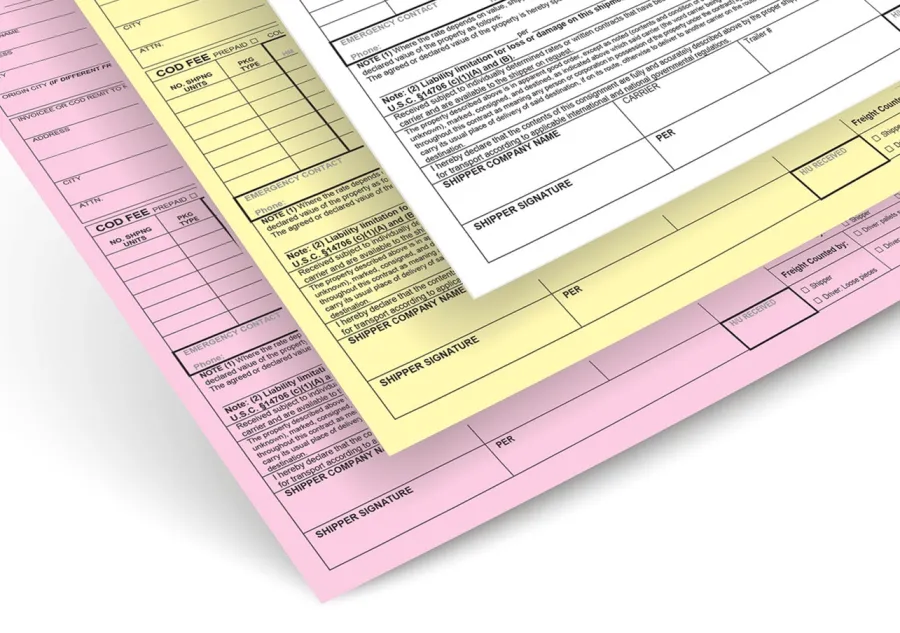
estimated reading time: 5 minutes
How does Carbonless Paper Technology work?
Multi-part NCR Forms are created from two or more sheets of
Carbonless Paper. When direct pressure is applied to the topmost ply, such as
when writing on it with a pen or striking it with a typewriter or impact
printer, the markings instantly transfer to every ply within the form.
This allows for the quick and easy duplication of form documents.
The markings made on the topmost ply are duplicated onto subsequent plies because
of special coatings that have been applied to one or both sides of each ply within
the form.
The underside of all plies, with the exception of the last
ply, is treated with a thin coating that contains microcapsules of a coloring
agent. The topside of all plies, with the exception of the first ply, is treated
with a thin layer of clay that absorbs and reacts with the coloring agent.
Making a firm impression on the form with a ballpoint pen,
typewriter key, or the print head of an impact printer will cause the bubble-like capsules
of coloring agent to burst. Not only will the microcapsules on the underside of the first ply break open, the microcapsules on each subsequent ply will also break.
As the coloring agent leaks out, it chemically reacts with
the clay coating that is on the topside of adjacent plies. This reaction creates
darkened images that replicate the writing or other markings made on the form. As
such, every ply below the first ply becomes a duplicate copy of the first ply.
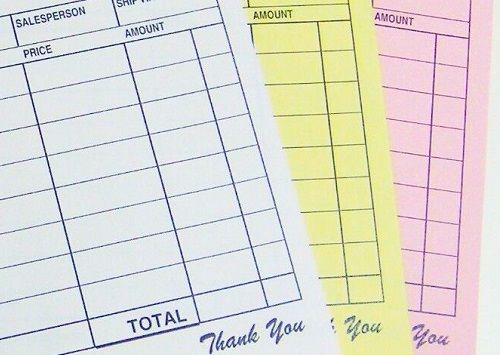
Some additional points about NCR Forms…
Carbonless paper uses several different abbreviations to indicate the placement of the coating(s) on a sheet. CF means the sheet has a coating on the Front
only. CB means the sheet has a coating on the Back only. CFB means the sheet has a coating on the Front and Back.
Thus, to create the necessary chemical reaction, a 2-part
NCR form would have two sheets positioned in the order of CB-CF. Likewise, a 3-part NCR form would have three
sheets placed in the order of CB-CFB-CF and a 4-part NCR form would have four sheets
in the order of CB-CFB-CFB-CF.
Also, the carbonless paper used to create multi-part NCR forms
is quite thin. The reduced thickness minimizes the resistance to the impressions
made on the first ply and helps ensure the dye capsules break open to transfer information
from one ply to the next.
Even though each ply of a multi-part NCR form is pre-printed
with an identical layout, or at least one that is very similar, different colors of paper are
used to differentiate each ply. Lighter paper colors, including pastels, provide better contrast, not only with the
pre-printed form layout but also with the user-added markings that transfer
from one ply to the next.
NCR forms can be made with any number of parts as long as the combined thickness does not inhibit the transfer of data. That said, the most popular NCR forms are 2-part forms, 3-part
forms and 4-part forms. Though the color schemes can be customized, the most common
paper colors used for 2-part forms are a white first ply and a canary (yellow) second
ply. The paper colors used most often for a 3-part form are a white first ply,
a canary second ply, and a pink third ply. Likewise, 4-part forms are frequently
created with a white first ply, a canary second ply, a pink third ply, and a
goldenrod fourth ply. Other colors, such as light green or light blue, are
sometimes substituted into the mix.
A brief history of Carbonless Paper and NCR Forms
Carbonless paper was invented in the early 1950's by the
National Cash Register company (NCR). As such, carbonless paper became known as
NCR paper. Over time, people interpreted NCR paper to mean "No Carbon Required"
which remains a fitting moniker to this day.
Prior to the invention of carbonless paper, duplicate copies
of handwritten or typewritten documents were made by slipping pieces of carbon
paper between the topmost sheet and subsequent sheets. Developed during the
1800's, carbon paper is a tissue-thin sheet that has a dark pigmented coating
on one side. The coating often contains carbon, hence the name.
The pressure from the strokes of a pen or the strikes of a
typewriter key is what forces some of the dark carbon to transfer to the sheets
beneath, thus creating a duplicate copy.
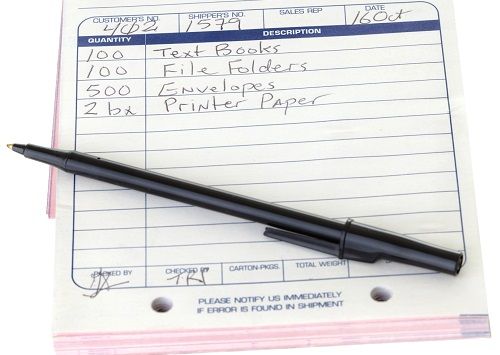
Unfortunately, the dark carbon would also transfer to fingers, clothes, and other unwelcome places. Besides being messy, another drawback of carbon paper was that it retained a visual image of the text that was being duplicated. So it was not a secure choice for documents that contained confidential information.
The advent of carbonless paper allowed duplicate copies to
be made easily, without the messy residue or security concerns of carbon paper.
Though typewriters have largely been replaced by word processing software and desktop printers in
most business offices, carbonless paper still remains popular for many multi-part
forms and documents.
What are the main uses of Carbonless Forms?
Whether referred to as Carbonless forms or NCR forms, these multi-part forms
offer a quick and convenient way to create duplicate copies of receipts, delivery
tickets, invoices, proposals, contracts, purchase orders, requisitions, work
orders, and any other document type that requires multiple copies to be made instantaneously.
NCR forms are particularly useful in the field, such as when
contractors or salespeople are handwriting individual proposals, contracts, or
receipts without the aid of a printer or copier. Also, many business offices still
use NCR forms that feed continuously through an impact printer for batch processing
documents such as invoices or purchase orders.
Are you in the market for Custom-Printed Business Forms?
Color Vision has been serving the printing needs of
businesses for over 40 years. We offer a variety of single and multi-part forms in just
about any size, configuration, or color scheme.
If you have an upcoming project and would like to receive a price
quotation, please complete our Quote Request form and we will be
happy to email a quote to you. Or, if you prefer to discuss your project by
phone, we can be reached at 800-543-6299.
We hope to hear from you soon and look forward
to assisting with your custom printing needs!
Related Articles
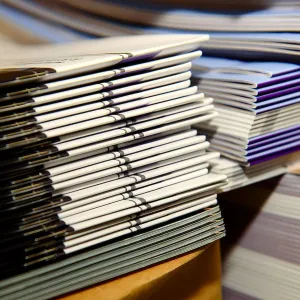
How Print Materials Help a Business Accomplish its Goals
Read This Article

Print Marketing: 5 Low Cost Ways to Promote your Business
Read This Article

Printing Proofs: Pay Extra Attention to Contact Information
Read This Article
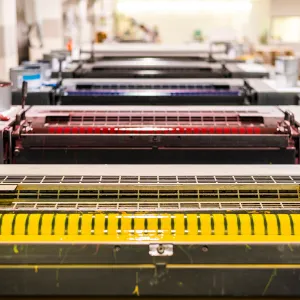
Discover the Advantages of Offset Printing for Your Business
Read This Article